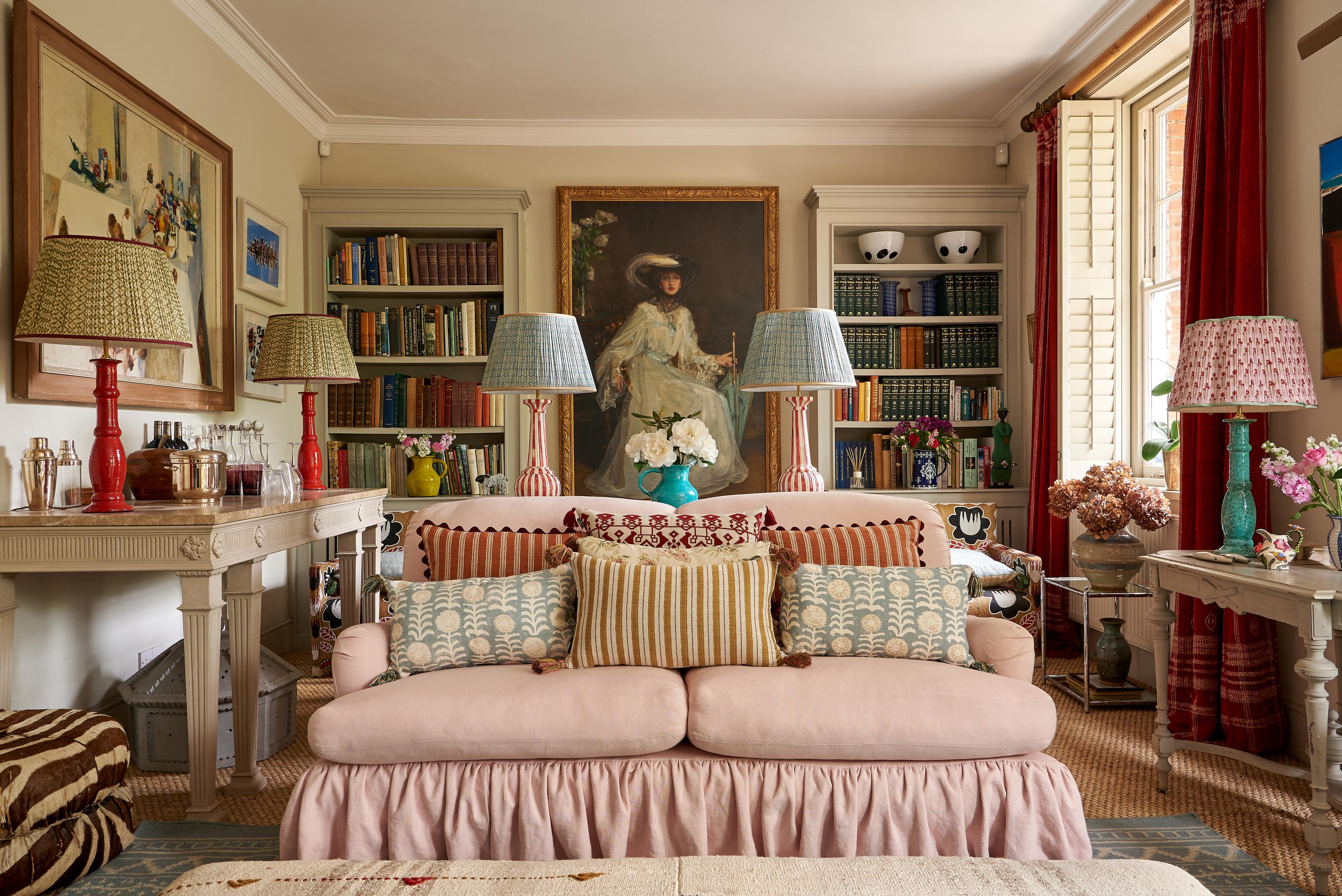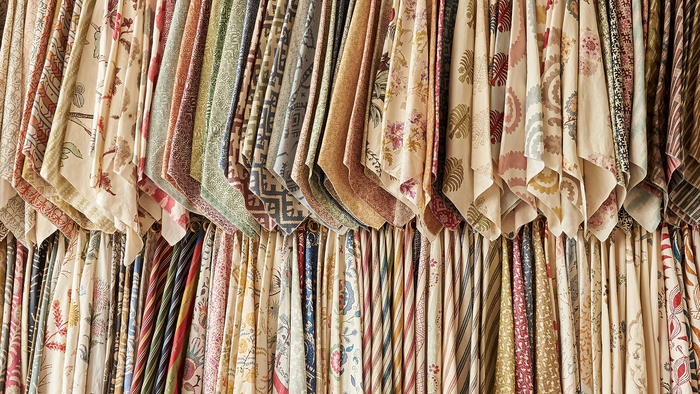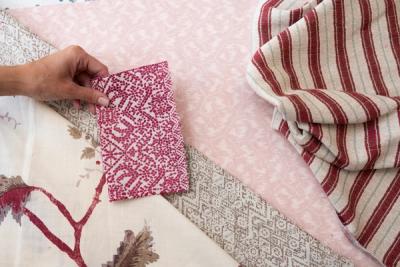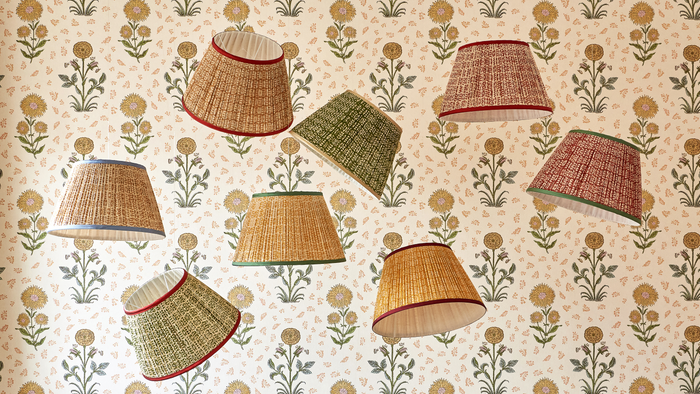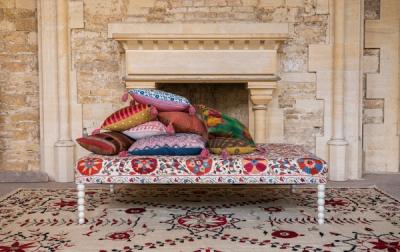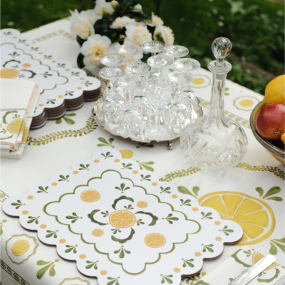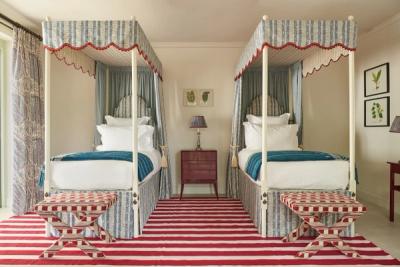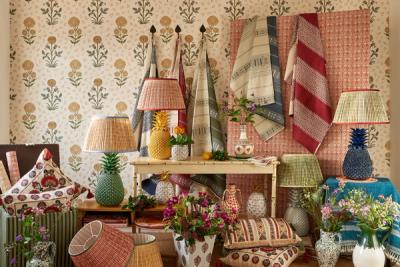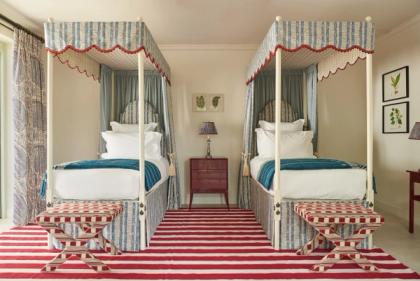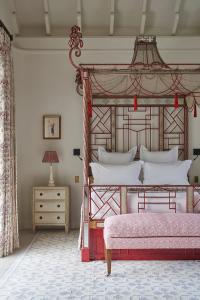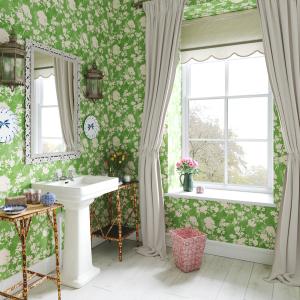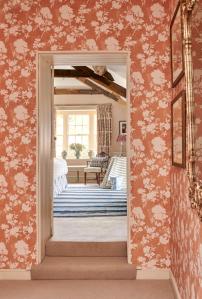Decoration
Living Room Inspiration: Decorating Around a Statement Pattern Wallpaper
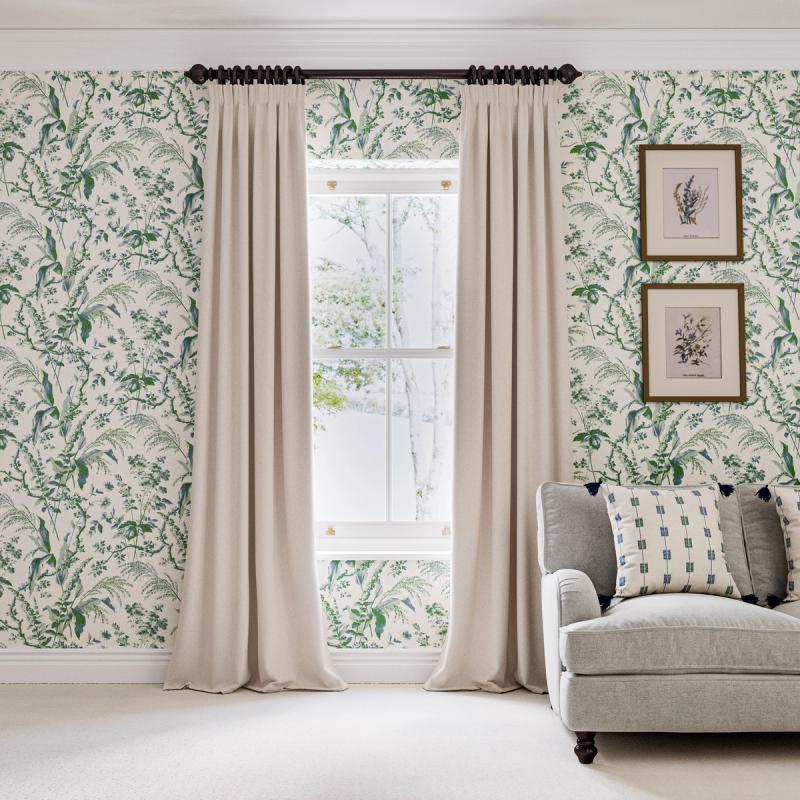
Living Room Inspiration: Decorating Around a Statement Pattern Wallpaper
Working around a statement pattern is one of the oldest tricks in the interior designer’s handbook. It creates an anchor for the room and the eye, which is the perfect solution for any room that, despite your best efforts, feels flat or as though it’s lacking a definitive focal point.
Focal points are very important. Even in the most minimalist of designs, intentionally creating an area that the eye is going to be drawn to first gives the room a sense of completion, flow, and coherence. A room filled with beautiful pieces that all garner the same level of attention will generally fall short of its potential impact.
Sometimes focal points are readymade and waiting, like a big archway or window directly opposite the door – but, for the rest of us, a statement pattern wallpaper is one of the easiest (and most effective) options for anchoring the room.
Pair a small, delicate print with a large wall to play with dimension
Most of us naturally see a big wall as an invitation to look exclusively at big patterns, particularly when they’re specifically looking at creating a statement. The assumption goes that a bigger pattern can make an impact from much further away, meaning it can be appreciated from any point in the room.
To a certain extent, this is rings true. A very, very small pattern will probably look more like a solid block of colour, particularly if you’ve opted for dimmer, more decorative lighting. Then again, a larger print can overwhelm a room and actually end up shrinking the wall. Unless you prefer the maximalist look, it can also cause a lot of competition between other patterns and textiles you introduce. In other words, a very large wallpaper pattern could restrict you down the line – and, often, that’s what people are angling at when they ask the classic question: ‘But won’t you get bored of it?’
But this doesn’t need to be an either/or scenario. Choosing a wallpaper that’s on the smaller side (but not so small that you need to be standing right next to it to appreciate it properly) is a very strong option. A wallpaper like our Daisy Chain Wallpaper is the right size to make an impact from across the room, but features enough intricate detailing that it will reveal more and more as you walk closer.
Why? Because a smaller print that repeats more times across a wall can help to make it appear larger. But, at the same time, the smaller print will force the eye to look a little harder from across the room, which can help to create the illusion that the room is longer than it really is, too.
Embrace contrast in your textiles
It can be tempting to ‘pin all of your hopes’ on a statement wall, and assume that, if you want it to anchor the room as intended, you will need to play down the rest of your décor through neutrals or, at the very most, complementary colours to avoid going overboard.
This doesn’t need to be the case. ‘Playing safe’ with the rest of your décor is an easy way to place too muchemphasis on your statement wall, and that’s when we can risk wandering into more of a show room style of décor.
When you have chosen your wallpaper, take some time to create a colour story, complete with a few contrasting colours – for instance, if you’ve chosen our, the best colours for creating contrast would be yellow and pink, not just neutral tones, other blues, and whites. Spreading these tones throughout the room won’t necessarily diminish the initial impact your wallpaper makes, but they will help to ensure that the rest of the room isn’t lost to your periphery.
Creating other points of intrigue is important, even if none of them carry the same weight as your statement wall.
Remember that statement walls pair best with statement lighting
A beautiful wallpaper will speak for itself, but amplifying that statement with your lighting is the key to really getting the very most out of it.
The good news is that it doesn’t take much. Positioning a couple of focal lights close to the wall so that their light shines up toward the ceiling will illuminate the pattern, and appear to expand the edges of the walls, which is particularly useful if your room is on the smaller side.
You can take a look at our full guide to using lamps to make the room feel bigger for more information.
More from Decoration
